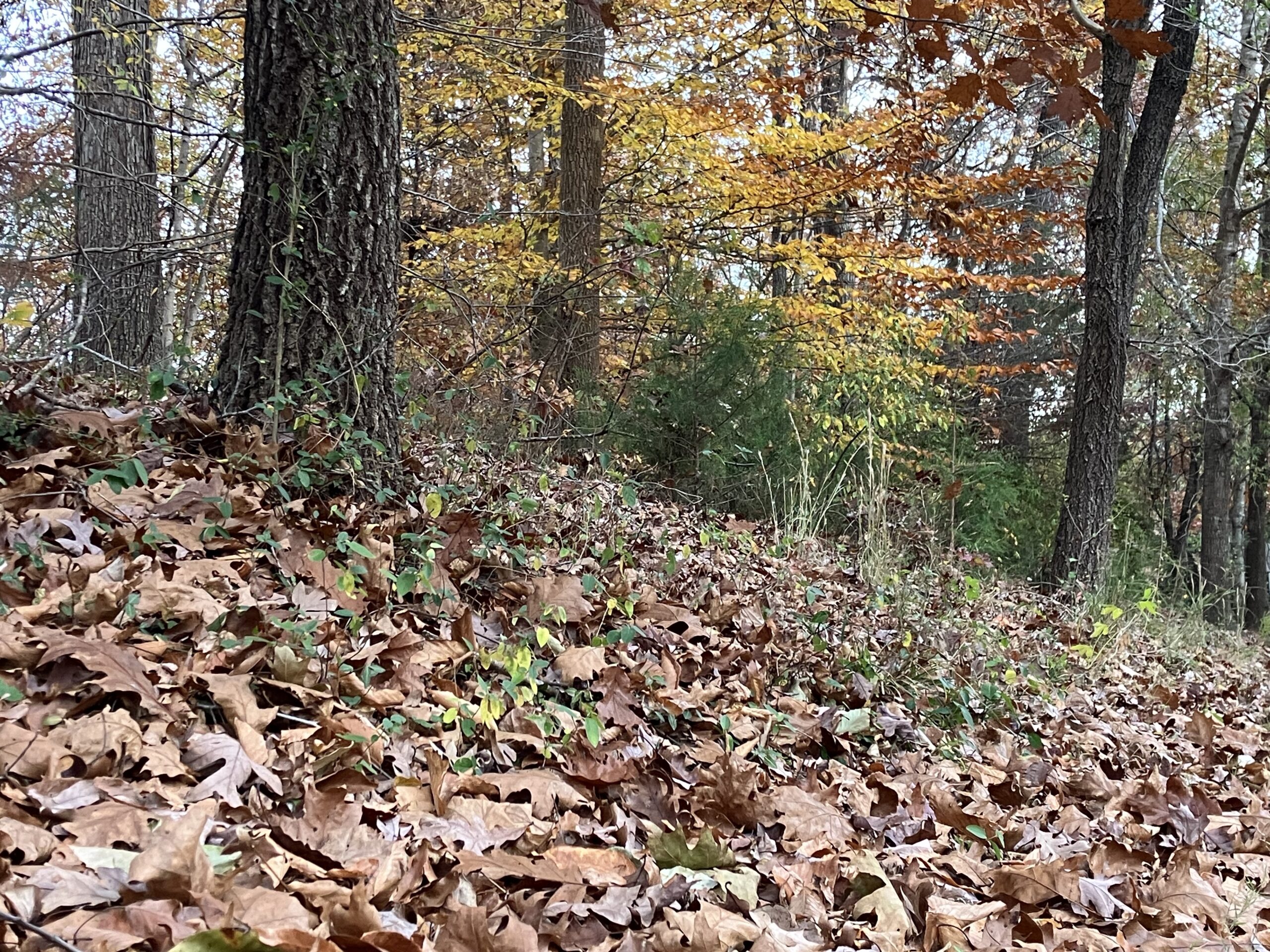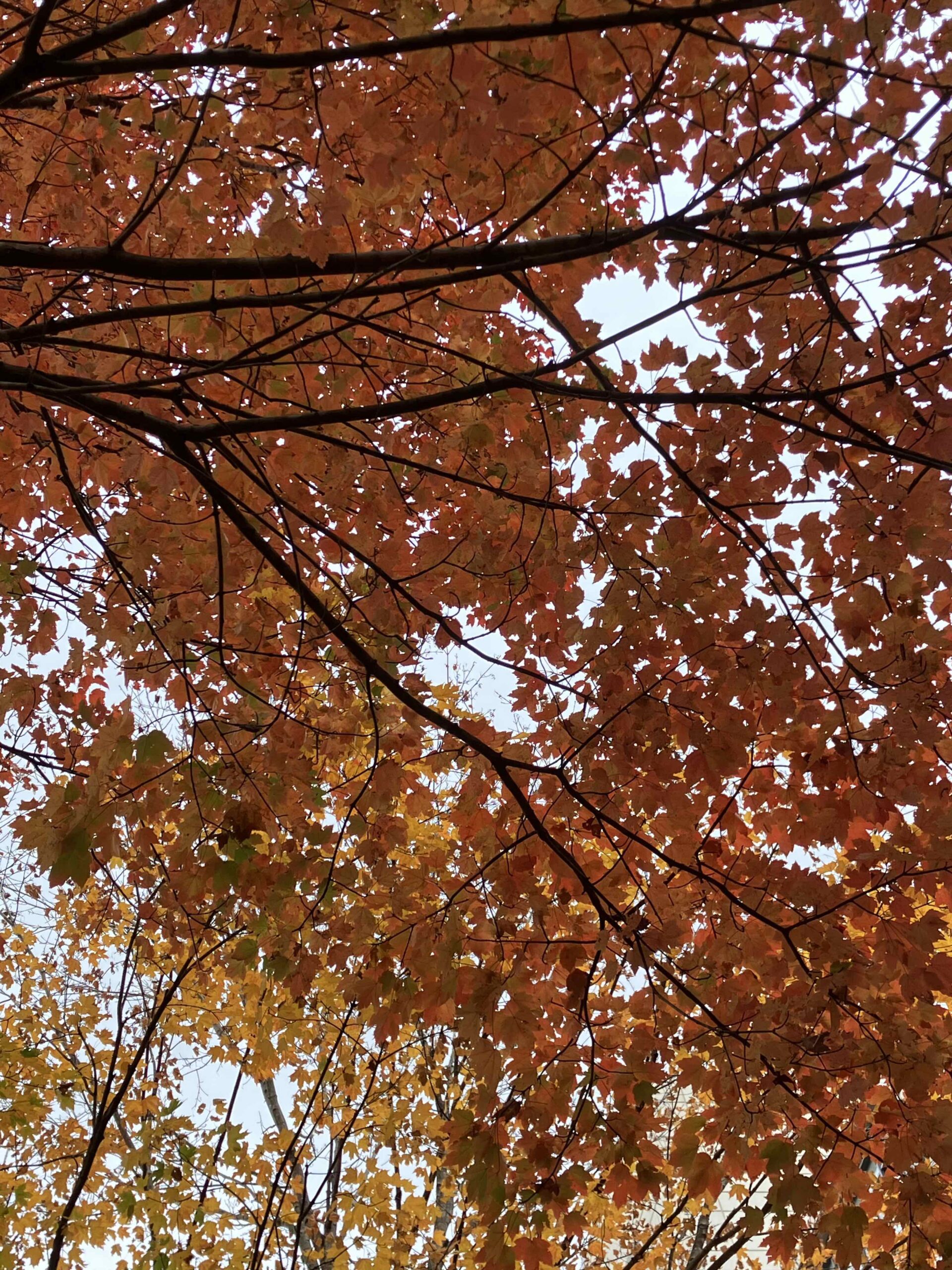
Leaf litter is beneficial.
As the temperature drops in the last third of the calendar year, our neighborhood trees exhibit two very visible behaviors. First, the leaves of deciduous trees transform from green into fiery shades of yellow, orange, and red. Then, many of the trees drop their leaves. Even pine trees drop some of their needles and cones, despite remaining ‘evergreen’.
The resulting layer of discarded plant matter that is characteristic of the autumn season is known as leaf litter. Unlike misplaced garbage that poses a threat to wildlife and the environment, this leaf litter is extremely beneficial to the local environment. Leaf litter provides shelter for small animals (insects, reptiles, mammals, birds), prevents soil erosion, and, as it decomposes, fertilizes the soil for nearby plants. If you have walked along a local trail recently and seen a sign stating “Leave your leaves,” this is why.
Leaf litter is food and shelter.

Leaf litter is fertile food for soil-dwelling microorganisms, which are critical for maintaining soil health by regulating nitrogen and nutrient levels. Birds feed on insects sheltered by plant litter and build their nests from fallen twigs. Among countless other creatures, our local leaf litter harbors important pollinators like bees and butterflies, as well as many caterpillars, including those that grow into the gorgeous luna moth. To read more about small creatures that overwinter in leaf litter, see Life in the Leaf Litter.
Leaf litter is protection.
Decomposing leafy groundcover is important for rainwater management. Plant litter helps to mitigate the effects of drought and heavy rainfall alike. By absorbing more rainwater than bare soil, leaf litter reduces flooding. The slow release of this absorbed water into the surrounding soil reduces plant stress during a drought.
Leaf litter has an important role in our ecosystem, so how is it produced? And what about the color change?
In preparation for winter, trees drop their leaves to conserve energy. Summertime photosynthesis enables trees to store enough sugars for the winter. While a lack of leaves halts photosynthesis, it enables trees to conserve energy, conserve moisture, and minimize wind strain by maintaining fewer components and by vastly reducing the surface area of their leafy canopies.
Plants respond to shortening daylight hours, which they sense through photosensitive receptors, phytochrome and cryptochrome. As the number of daily hours of sunlight decreases, deciduous trees slow their production of chlorophyll, the pigment that enables plants to absorb sunlight and provides their characteristic green hue. Unlike the broad leaves of deciduous trees, conifer needles are specially adapted to withstand the cold and can maintain their chlorophyll production through the winter. Carotenoids, the class of pigments that produce yellow, orange, and brown hues—like those seen in carrots and squash—, are produced by trees year-round, but they only become visible when chlorophyll levels drop off. In dim light and cold temperature conditions, some plants produce additional pigments called anthocyanins, which are responsible for the red and purple hues of autumnal oak, maple, and dogwood tree leaves. For more on the chemical sequence of leaf color change, see The Process of Leaf Color Change.

Each leaf stem contains an abscission layer at the boundary between leaf and branch. As temperature and daylight hours decrease, trees increase their production of the hormone auxin. Rising auxin levels prompt the abscission layer to progressively restrict the amount of water traveling from tree trunk to leaf, and the leaf falls off when it is no longer receiving moisture from the trunk and roots. When decomposed by soil-dwelling microorganisms, fallen leaves release plant nutrients that replenish the soil and act as fertilizer.

Leave your leaves.
Though raking leaves may be a traditional autumn activity, we and the world around us might be better-served by leaving our leaves and promoting the natural cycles of tree growth, critter sheltering, and soil fertilization. In addition to diminishing leaf litter’s wide-ranging benefits, leaf blowing and loose leaf collection produce a considerable amount of pollution. If tree leaves are overwhelming your yard or have fallen onto a walkway, the extra leaves can be composted or mulched for use in gardens in future seasons.
Peer Editor: Nick Randolph